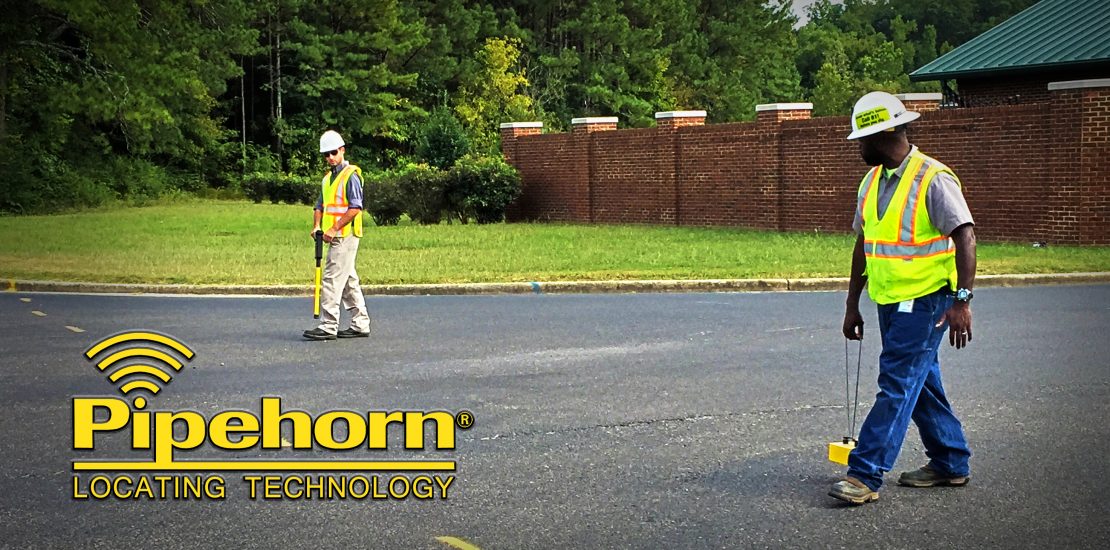Back to the Future: Very High Frequency Inductive Locating – Friend or Foe?

Inductive Locating No! Never, watch out, trouble, useless! These are words many associate with very high frequency inductive locating. More polite might terms might be “caution” or “last resort.” Over time, very high frequency inductive locating has gotten a bad rap. Is it deserved? Can it get you into trouble or out of trouble? Is it a thing of the past or a part of the future?
What is Very High Frequency?
Today’s pipe and cable locators generally use frequencies ranging from 100 Hz to 480,000 Hz. Many years ago, 80,000 Hz (80 kHz) was considered high in the locating world. Today, frequencies from 400 kHz up to 490 kHz are considered very high. Any higher, and you’re in the AM radio broadcast band, which might ruffle feathers at the FCC.
Why do people avoid using very high frequencies and inductive locating?
Myth #1: Very high frequencies only confuse things. In fact, very high frequencies have a talent for getting onto many conductors, both hard to trace lines and adjacent lines.
Myth #2: Inductive locating is for unskilled, novice locators. Inductive locating is simple and fast, but to do it well in complex situations requires in-depth knowledge of locating principles and more advanced locating skills. So, when identifying and marking just one line (as opposed to finding all lines), the first choice is low frequency conductive to reduce signal on other lines and air-coupling from the transmitter.
So, can very high frequencies and inductive locating be your friend?
Absolutely! True damage prevention requires that we “know what’s below,” and that means everything that’s below. “Your friend for finding Unlocatables”: Sometimes, there is no access to direct connect or there is not sufficient signal at low frequency to trace a line. These situations don’t have to be classified as “unlocatable”. Very high frequency inductive locating offers flexibility that can solve an otherwise impossible locate. Your friend for finding Unmarked Lines: Not all lines are marked for excavators. So, what is an excavator to do? What can make digging safer? A very high frequency inductive safety sweep is the perfect technology and technique to verify existing marks and avoid lines that are not marked. Other very high frequency induction “friendly” situations: – Inserted and short-side services or stub outs – Tracer wire or tape that is broken, deteriorated, or not accessible – Street or parking lot lighting, cast or ductile iron pipes – Energized power lines and stubbed-out power secondaries – Fiber optic lines with no access or minimal metallic content – Searching for unmarked private facilities – Verifying existing marks.
Is very high frequency inductive locating a part of the future of damage prevention?
Undeniably! Our common goal is fewer damages and safer digging. Finding it all, including difficult conductors and unmarked lines, is critical to this effort. Very high frequency locators are an indispensable technology, and the inductive safety sweep is an invaluable technique for achieving this goal. As evidence, major gas distribution utilities, excavators and others have experienced reduced damages and safer digging after adopting these technologies and techniques from the past, as they strive for a safer future.
Summary
Very high frequencies and inductive locating are simply tools in the tool box. It’s not that they are good or bad, friend or foe. Rather it’s whether they are appropriate for the task. When the task is safer digging, very high frequencies and inductive locating are essential tools for the job.
Since 1968, Pipehorn has manufactured and sold equipment to solve problems, increase productivity, prevent damage, and work safely, including electromagnetic, ferromagnetic, and water leak locating equipment. For more information, visit www.pipehorn.com
As published in American Locator Magazine. ©2017 Pipehorn Utility Tool Company, Inc.
Written by: Don Plosser – President, Pipehorn
Re-printed with permission